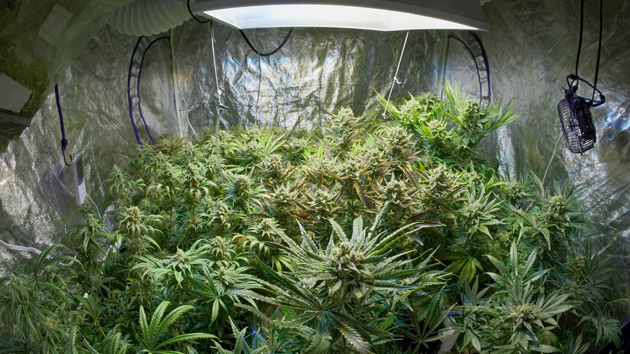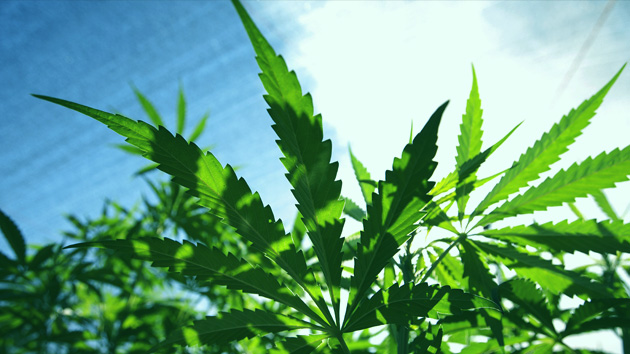
<a href="http://www.shutterstock.com/pic-86268013/stock-photo-water-drops-on-green-leaf-of-hemp.html?src=N8-sBnCAcfimOdQG8xH5Mg-1-0">Yarygin</a>/Shutterstock
There were helicopters, SWAT teams, and nearly 100,000 marijuana plants yanked out of the ground, but last week’s massive raid in Northern California’s rugged Emerald Triangle was not your father’s pot bust. Carried out by county law enforcement with no help from the DEA, it targeted private landowners—and not just because they were growing pot, police say, but because they were illegally sucking some 500,000 gallons of water a day from a section of the nearby Eel river that is now stagnant and moss-ridden.
In short, the cops say this was as much a water raid as a pot raid. One certainly could imagine, in this era of evolving attitudes toward marijuana, a shift in enforcement focus toward environmentally problematic grows on steep wooded hillsides or above sensitive salmon streams in an increasingly dry climate. These are not isolated issues: Among the growers targeted in last week’s raid, according to the Lost Coast Outpost, were members of California Cannabis Voice Humboldt, a group working to bring growers into compliance with state and federal environmental laws.
A leading advocate for Northern California pot growers scoffs at the notion that the raid was environmentally motivated. “This isn’t about the environment; this is about business as usual,” says Hezekiah Allen, director of the Emerald Growers Association. Allen challenges the authorities’ water use estimates, pointing out that the extensive reservoirs discovered at the grow sites could be eco-friendly ways of storing winter runoff for use during the summer growing season. He also questions the value of criminal raids at a time when the California Water Board is drafting a system of water-use permits and civil fines for pot farmers.
“There are 2,200 un-permitted water diversions for wine grapes in the Central Valley,” he points out, citing a state report, “so I am curious when we are going to see the sheriff show up and chop down un-permitted vines. If we are agnostic about what the crop is, the same crime should lead to the same activity. That is all we are asking, just to be treated like any other crop.”
Yet if state and local officials are to be believed (they did not respond to requests for comment), the raid suggests that even the most eco-conscious Emerald Triangle growers could face a reckoning once California (probably inevitably) legalizes cannabis and starts subjecting pot farms to agricultural inspections. Even with the the best land-use practices, many Emerald Triangle farms likely draw too much water from sensitive mountain streams and headwaters. Growers may find that it’s cheaper and more eco-friendly to relocate to the Central Valley.
Or why stop there? Cannabis, indigenous to moist river valleys in Central and South Asia, uses about six gallons per day per plant. That’s more than many other thirsty crops, such as cotton, which uses 10 gallons per plant for the entire growing season. Which suggests that cannabis should be grown somewhere wet—somewhere other than California.
Allen doesn’t see that happening. He argues that cannabis farming in the Emerald Triangle can be sustainable when farmers cultivate drought-tolerant Kush varieties from Afghanistan, and irrigate entirely with rainwater stored in tanks onsite. After all, no crop offers a greater financial yield per gallon of water. “If we step back and take a look at this industry and the jobs that it creates, California cannot afford not to grow cannabis in the 21st century,” he says. “It’s one of the most adaptable, resource-efficient ways of generating revenue on small farms.”












